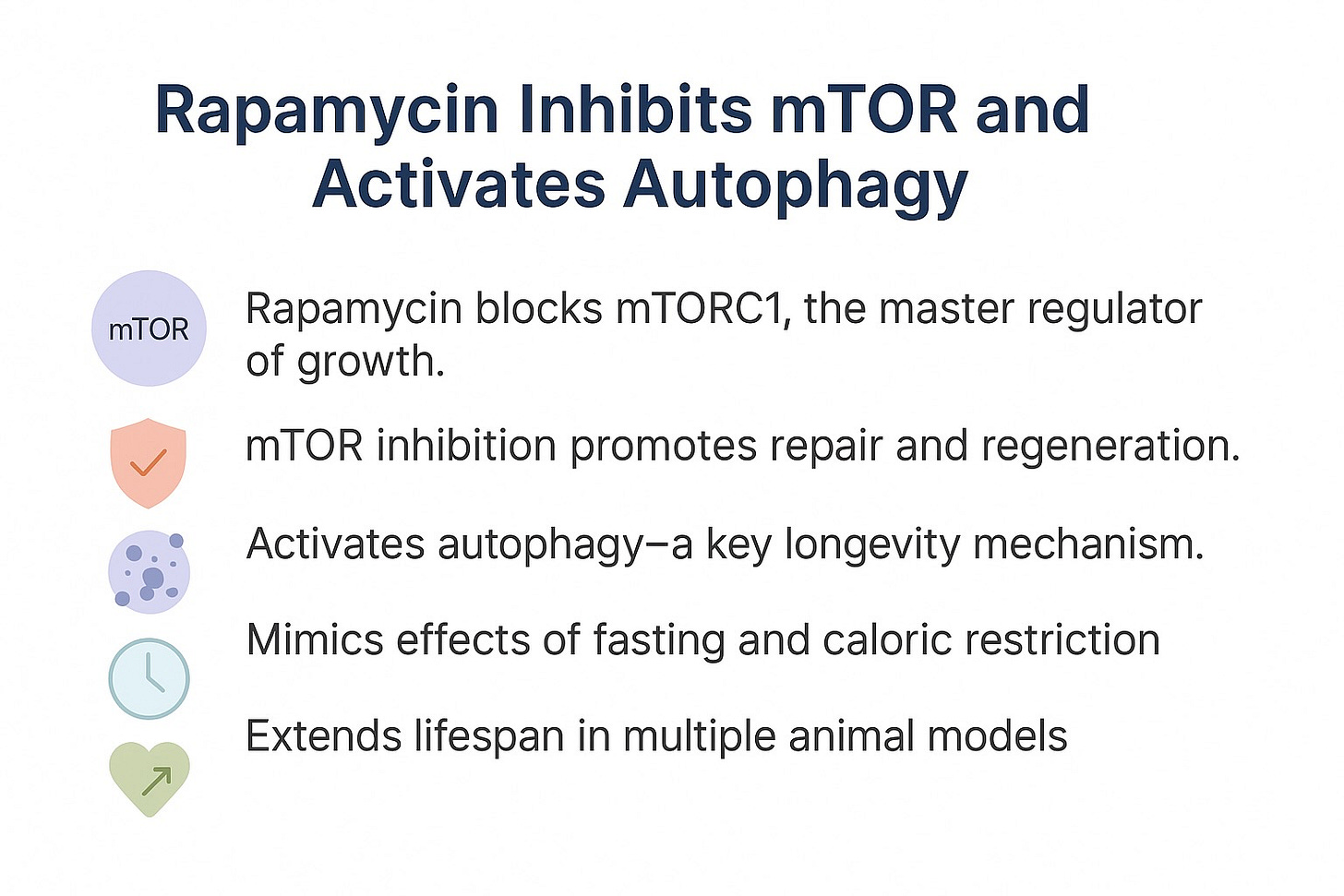By Dr. Titus Maniera
What if aging isn’t just a story of decline—but a process we can influence, right down to the cellular level?
As a general practitioner and longevity consultant, my mission is to uncover and share practical strategies that can extend our healthspan today—not just in some distant biotech future. One of the most powerful frameworks I use in both clinical practice and research is what I call the Longevity Triad.
This triad draws on deeply rooted, evolutionarily conserved pathways that allow us to shift our biology—from a state of constant growth and proliferation to one of repair, regeneration, and resilience. The three core levers are: strategic stress, molecular targeting, and fasting.
I’m honored to be presenting this concept in depth at the Longevity Summit in Dublin from July 2–4, 2025. Here’s a brief preview.
Stress – Hormesis as a Friend
"What happens if I do 10 burpees right now?" Heart rate spikes, breath shortens, stress hormones surge. But this temporary stress is beneficial.
This is hormesis: the concept that small, controlled stressors trigger biological adaptations that increase resilience. In longevity science, hormesis is a goldmine.
Examples:
Cold exposure increases norepinephrine and activates brown fat.
Sauna triggers heat shock proteins, associated with reduced mortality.
Hypoxia and breath holds increase mitochondrial efficiency.
HIIT stimulates mitochondrial biogenesis.
Polyphenols like resveratrol and curcumin activate protective pathways via xenohormesis.
Key molecular players:
AMPK: Our energy sensor, activated by exercise/fasting. Enhances insulin sensitivity and autophagy.
Sirtuins: NAD+-dependent enzymes regulating inflammation, DNA repair, mitochondrial function.
Nrf2: Master antioxidant regulator.
With the right stress at the right dose, we boost cellular health and slow aging. A little chaos keeps biology sharp.
Molecular Targeting – The Silent Interventions
Not all longevity tools require physical effort. Some work silently at the molecular level.
The key target here is mTOR – the mechanistic target of rapamycin. Constant mTOR activation, common in today’s nutrient-rich environment, accelerates aging. But its selective inhibition can unlock cellular repair.
Agents that modulate mTOR and related pathways:
Rapamycin and rapalogs (under supervision)
Metformin, berberine
Resveratrol, EGCG, curcumin, quercetin, sulforaphane
These compounds:
Activate autophagy
Enhance DNA repair
Lower cancer and neurodegenerative risk
Extend lifespan in animal models
Ketone bodies like β-hydroxybutyrate (from fasting) also act as signaling molecules that epigenetically regulate gene expression.
This is longevity at the molecular level: epigenetic tuning through nutrition, movement, and targeted molecules.
Fasting – The Biological Reset
Fasting is a powerful biological amplifier. Done right, it does more than conserve energy. It triggers profound regenerative processes.

Types of fasting:
Intermittent fasting (e.g., 16:8, OMAD)
Prolonged fasting (2–5 days)
Fasting-mimicking diets (FMD)
What happens during fasting:
Insulin drops; body shifts from glucose to fat metabolism
Ketone levels rise (esp. β-hydroxybutyrate)
AMPK is activated; mTOR is suppressed
Autophagy is induced
Sirtuin activity increases
Evidence-backed benefits:
Increased stem cell regeneration (MIT, 2014)
Improved chemotherapy tolerance (Valter Longo)
Lower inflammation and cancer risk
Lifespan extension across species
Fasting is not deprivation. It’s a strategic biological reset.
Metabolic Flexibility & Real-World Observations
In the fed state, insulin levels rise and signal the body to use glucose as its primary energy source. But when fasting or reducing carbohydrate intake, insulin drops—and the body switches to burning fat and producing ketones. This ability to alternate between fuel sources is called metabolic flexibility.
Why is this important? Glucose and insulin don’t just fuel the body—they also shape our biology. Persistently high levels activate inflammatory pathways and stimulate growth signals like mTOR, which, over time, can accelerate aging and disease.
In clinical practice, I often see women with elevated LDL but clean carotid arteries. In contrast, nearly every older patient with a high HbA1c shows clear signs of atherosclerosis. It’s not just about cholesterol—it’s about the broader metabolic context.
Fostering this metabolic flexibility enhances autophagy, improves mitochondrial function, supports cellular repair, and strengthens the body’s resilience over time.
Building the Longevity Triad
Each of these strategies is powerful. But when combined, they synergize.
The Longevity Triad in action:
Intermittent fasting 4x/week
Cold plunges + HIIT 2x/week
Low-dose rapalog (under medical supervision)
Expected outcomes:
Enhanced metabolic flexibility
Reduced inflammation
Boosted mitochondrial and cellular resilience
Favorable shifts in gene expression
This isn’t about doing more—it’s about doing smarter. Strategically combining interventions that reinforce one another.
Personalization and the Future
Longevity isn’t one-size-fits-all. Your genes, habits, environment, and goals matter. Some thrive with intense hormesis. Others need gentler approaches.
The Longevity Triad is a flexible, evidence-based framework to personalize your path. It empowers you to act now, based on science, to live longer and better.
This isn’t about chasing immortality. It’s about extending the years we feel fully alive.
Join me at the Longevity Summit Dublin (Jule 2-4) where I’ll share how you can integrate these strategies into your daily life.
Dr. Titus Maniera, MD
Health & Longevity Consultant
Substack: drtitusmaniera.substack.com
LinkedIn: @titusmaniera
#LongevityTriad #Fasting #mTOR #Hormesis #Healthspan #LongevitySummit




